We are fully into our next location during this nomadic tour of California, and that is the Mojave desert! Being based very close to Joshua Tree National Park means we get to experience the end of winter and early spring in the desert; it’s a totally different landscape, and so beautiful! So with the total switch up in ecosystem from the redwoods of Santa Cruz Mountains where we last inhabited means a totally new switch in flora and fauna. The most strikingly different plant is the topic of this post, CACTI! After hiking around for a bit, I’ve got some questions for these funky fun plants!
But First, Some Cacti basics. . .
So we all know cacti has the water-storing spiky plants of desert or dry ecosystems. Cacti are succulents, and succulents store water in their tissues. When water is a plenty cacti’s deep root system absorbs the water quickly and efficiently.
Those spikes we love to look at, but avoid surprising contact are necessary to keep wildlife away from tearing into its flesh in water deprived habitats. Spines don’t only protect the plant, but they provide shade to the stem and lessen the impact of wind. After living in the Mojave desert for a couple weeks, the wind is real! Wooosh!
In “normal” plants, during the day leaves open their pores to cool themselves down. Leaves do this by moving water from the stem to the leaves out into the air. Yahoo transpirational cooling! But cacti only open their pores at night so other methods of cooling have evolved.
Why are the woody Skeletons of Cholla cacti full of holes?
Chollas, when closely studied, are constructed of diamond, or upside down raindrop shaped tubercles. As the plant ages, and dies the green fleshy parts break down and come off. It’s really an amazing visual structure left behind, but the design is totally necessary to battle the harsh weather conditions of the desert.
These cacti have to deal with pretty pretty strong winds putting tension on individual plants in different directions. Researchers Vivo et al. from University of California in 2019 analyzed the structure of the cholla cactus skeleton which they describe the cholla cacti has having “helical porosity” which I think describes it well. They found that this funky structure is “a balance between axial and torsional stiffness.” So essentially a balance is struck between the plant being able to support it’s own current and future weight, and resisting the twisting forces of the desert winds. There is also a water saving component, why grow excess water dependent material if it isn’t necessary! While the paper has a lot more material engineering details that show quantitatively a very strong design that could be used into “bio-inspired designs” such as “drive-shafts or lower limb prostheses.” NEAT!
What causes the different coloration in the same species of cacti?
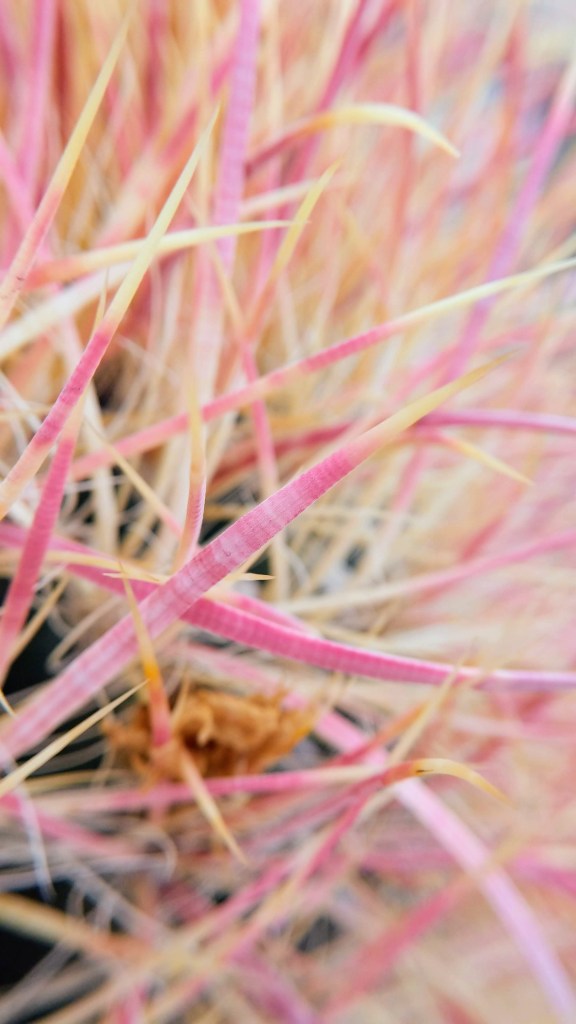
Bright corally pink! 
Dark purple-y color with white! 
Model Clara showing off two different colors of California Barrel Cactus.
When driving to Borrego Springs there is a small traffic circle near town with three purple Prickly Pear cacti in the center. I always remarked how neat and different the color is, but now I know the poor cacti are STRESSED! Ah! Poor guys! These cacti turn a shade of light grape purple in response to cooler than normal temperatures. While this purple color may be a normal seasonal change in winter it is the plant responding to suboptimal conditions. But they aren’t the only ones to turn purple, or a similar red-ish color, other desert dwellers such as succulents, agave and aloe” will alter their appearance (Victor’s Landscaping).
But for the other cacti I’ve observed that aren’t so purple, cacti just like other plants respond to environmental factors in many ways, and that reflects on their outward color. Changes in rainfall, day length, day or night time temperature, soil structure can all affect a plant’s appearance. Sunlight is a big factor for succulents, which includes cacti. Succulents are any plant in dry climates or living in low moisture soil with thick fleshy parts which stores water.
When light availability is low, plants keep chlorophyll in high concentrations, appearing green to maximize photosynthesis. For a full explanation of chlorophyll and photosynthesis, see this post. When in a bright environment red/pink colored pigments (anthocyanins) are in higher concentrations which protect the plant against UV overexposure. But for cacti members of the order Caryophyllales the anthocyanin pigment is replaced with betalanin pigment, only found in about 6% of all plants.
But light levels aren’t the only factor. When succulents experience cooler temperatures the red-ish pigments appear in succulents which help to protect the plant. These betalanins are more stable than the green pigments at low temperature. Geez, these red pigments are a great defense mechanism for our plant friends!
So in summary, plants alter their pigment levels based on environmental change. Household and garden plants can have their environmental conditions altered by their landlords, but wild plants have no such aid. California has so many microclimates that one plant could be quite different than another of the same species not far away. When I spot differences in coloration in super close proximity such as the barrel cactus image above I really start to wonder what’s going on! But I’m glad to understand a bit more of the why .
Why do the larger cacti look dried out/dormant except for the tips/terminal sections?
Walking through the desert it’s easy to notice that the cacti, especially chollas appear quite dry and dormant at the lower half or so, and only the top section has the lively green section. At first I thought this was odd, but it’s actually an adaptation to maintain its structure as the plant ages. This is called “corking!”
As the plant ages it slowly discolors and hardens to a bark-like appearance. Cacti can contain sooo much water that the weight gets heavy and can cause strain on the rest of the plant. So to counteract the growing and expanding upper parts the fibers at the base of the plant hardens and continues to harden as the cacti ages.
How are some cacti able to grow on rock faces?
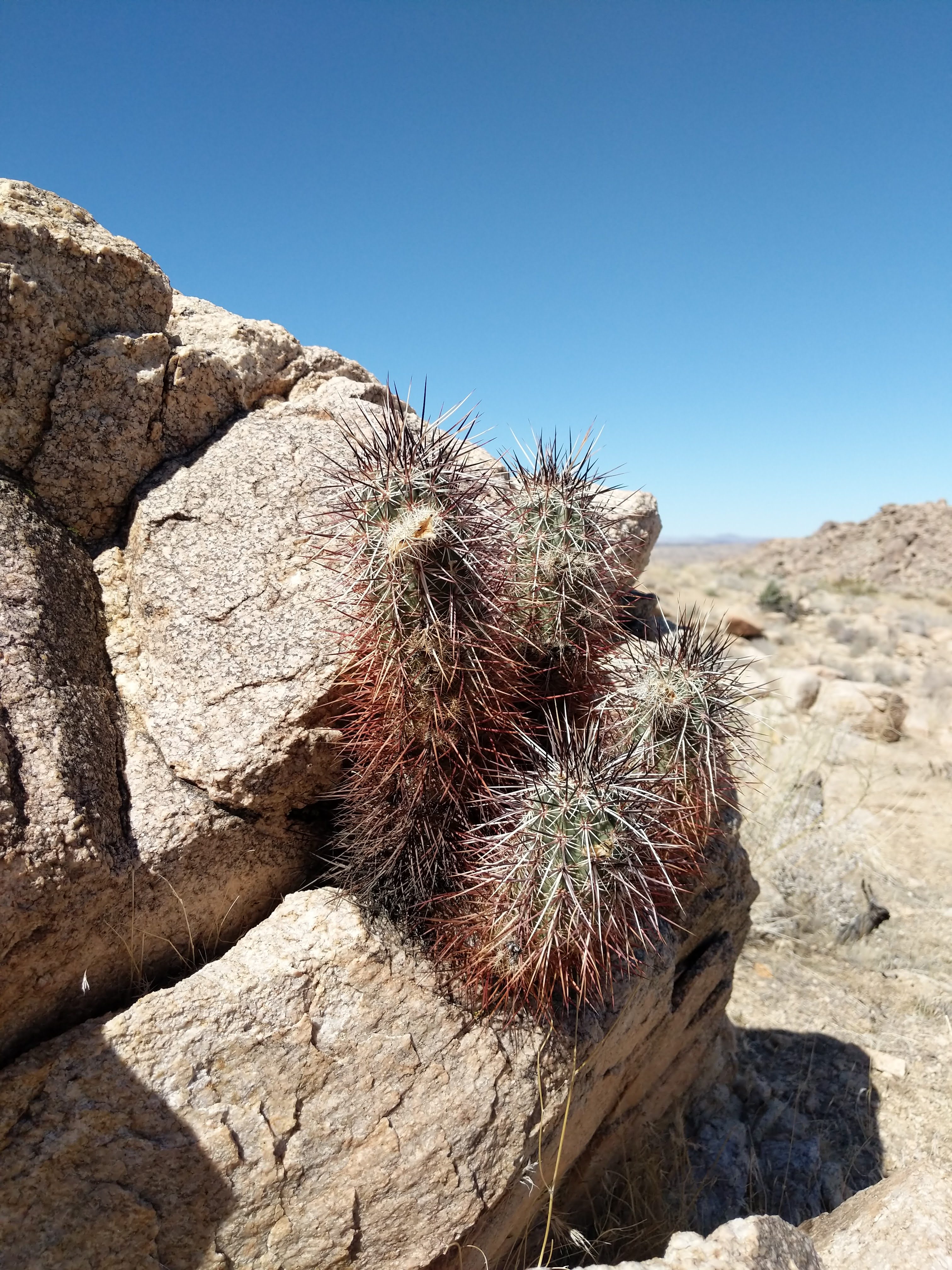
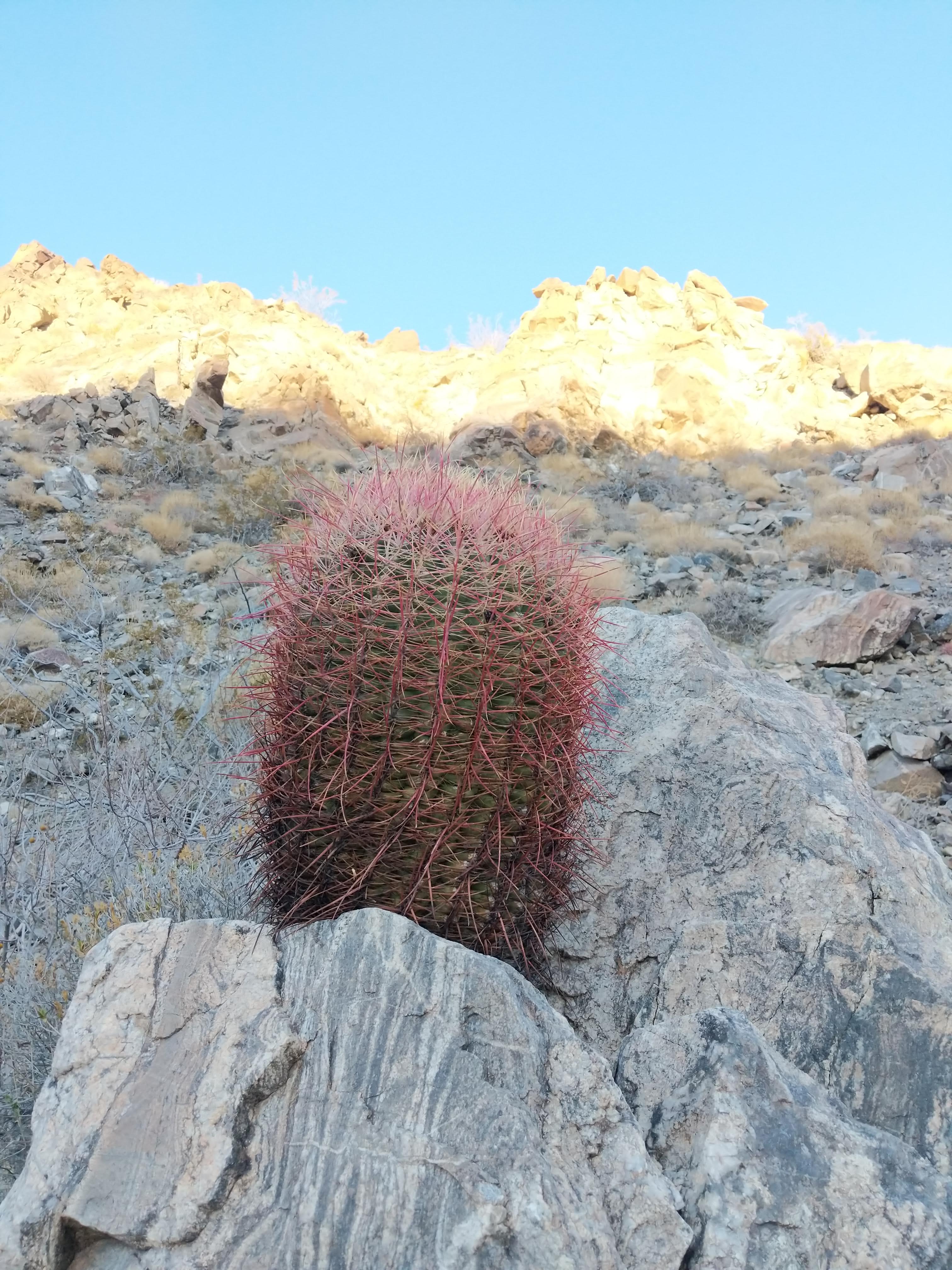

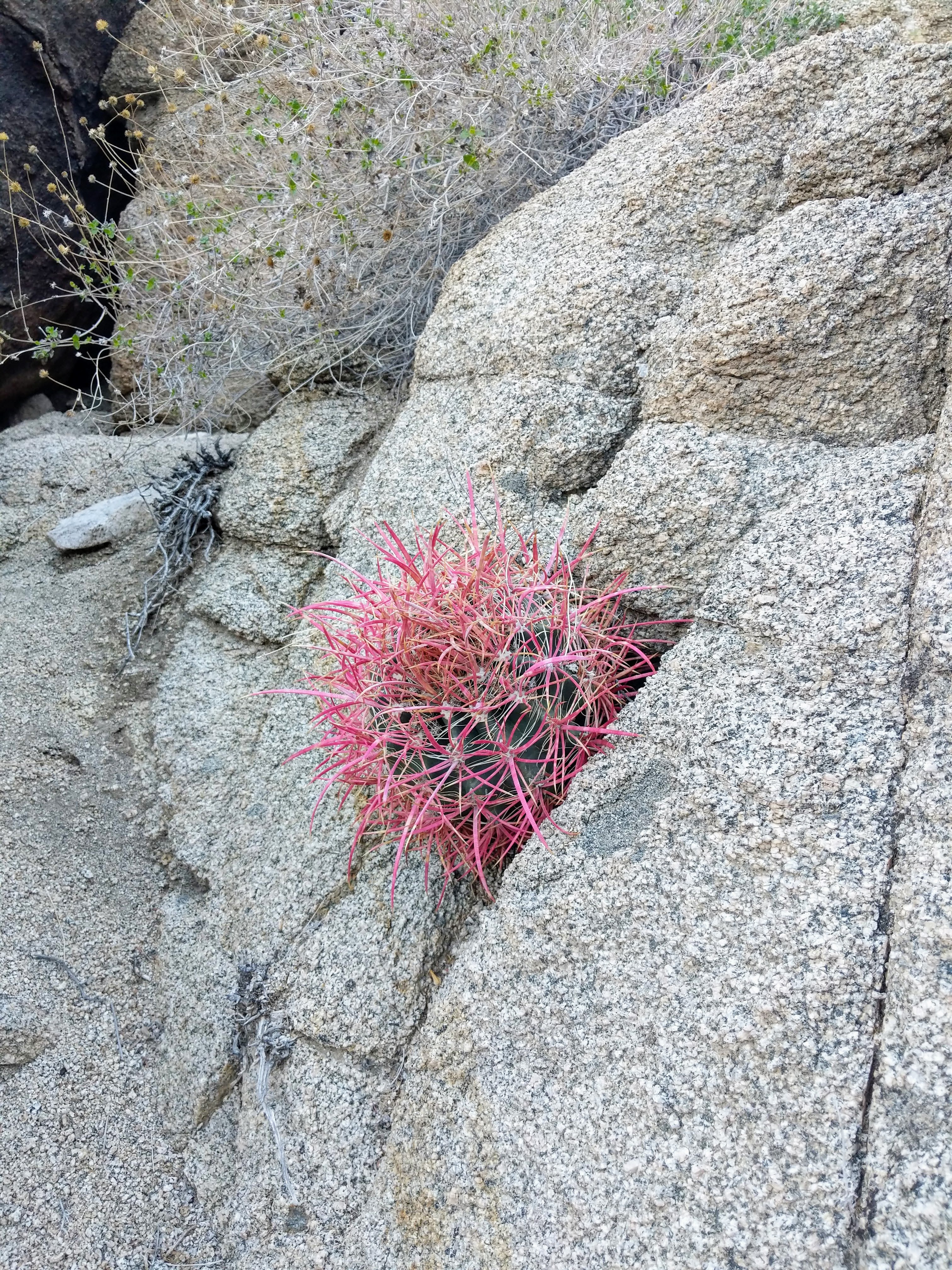
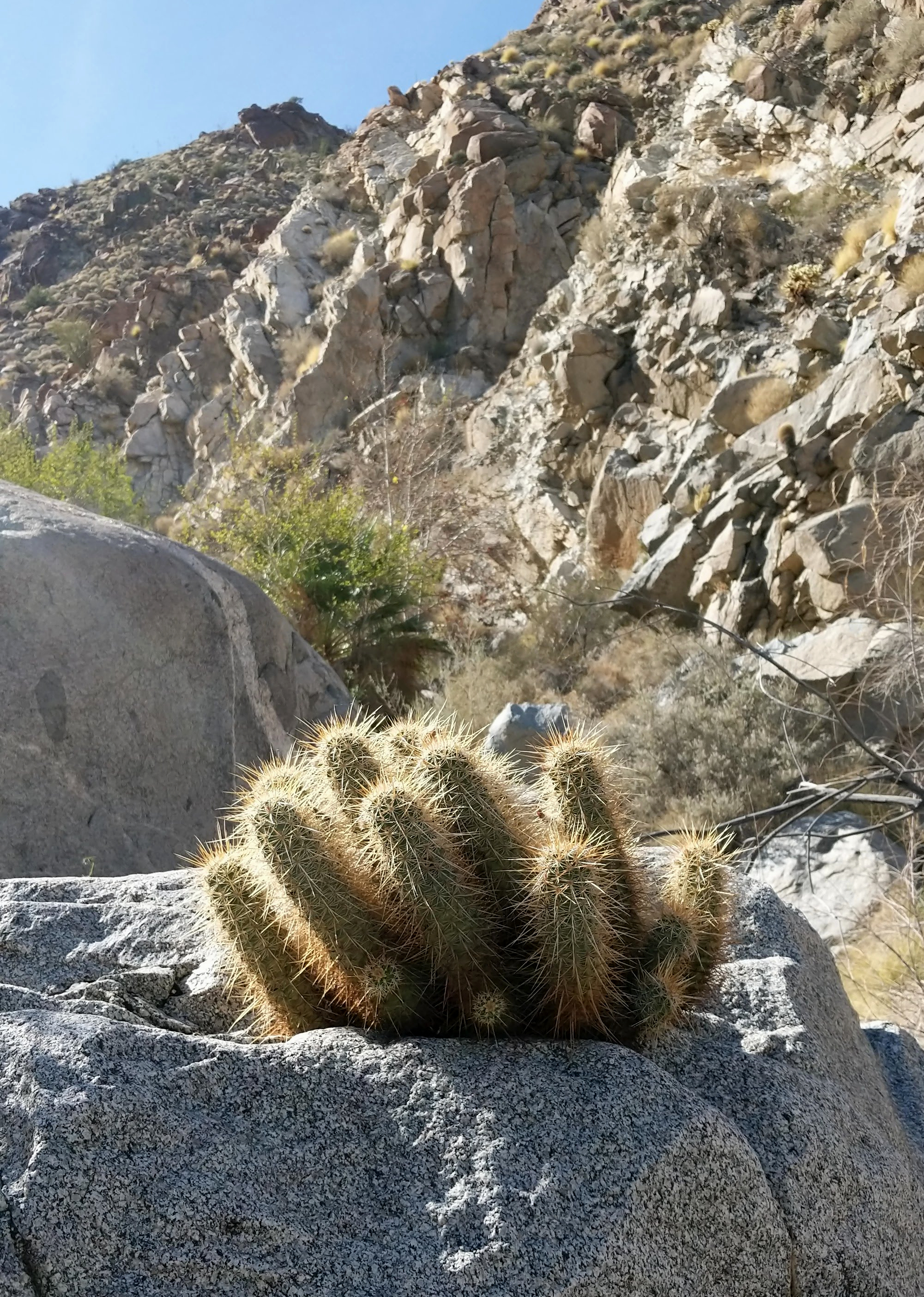
I was worried I wasn’t going to find an answer to why some cacti seem to thrive on rock faces with no real soil in sight. Desert soil is truly it’s own type of “soil” anyway! But the cacti has a friend! Its nitrogen fixing bacteria! Biologist Bashan at the Northwestern Center for Biological Research with colleagues found bacteria growing on the cacti’s roots, and inside the roots as well. Woooow!
So what’s going on here? Let’s say it together, 1, 2, 3, SYMBIOSIS! The bacteria is able to dissolve away at the rock which allows a little baby cactus seed to start its journey. Cacti roots are able to take hold in the rock, and fracture it further but only because of it’s relationship with the bacteria. As the cacti establishes it provides carbon back to the bacteria, and in return the cacti receives nitrogen. Nitrogen is essential to life for plants, and without the bacteria the cacti couldn’t survive. Since rocky cliffs or rock shelves are pretty inhospitable places, the cacti seeds with the bacteria have a definite advantage over other plants.
This process makes the cacti a “pioneering” plant. Any species that can establish in a barren environment qualifies. Since this awesome duo can colonize on rock faces and break down the rock into eventual soil they definitely qualify. Woot woot awesome!
Do cacti reproduce by losing small sections?
Yes and No!
The Teddybear Cholla (Cylindropuntia bigelovii) reproduces by letting go of small parts at stem-joints which then hopefully start new plants after rollling around the desert floor! This is known as reproducing “vegetatively.” In this asexual reproductive method a whole area could be the result of one “mother” plant! If you’ve ever visited Joshua Tree National Park and strolled through the Cholla Cactus Garden, that whole area could be the result of one initial plant. So many babies! Those babies can easily get stuck to clothing especially shoes, like the photo above! Ouchie!
But some cacti, such as the Hedgehog Cactus (Echinocereus engelmannii) reproduce through protandry, a type of sexual reproduction. This occurs when a flower is produced the pollen receptacle part of the female flower remains closed until the pollen on the male parts are collected by bees. This tactic avoids self-pollination.
A few interesting species:
I wanted to research a few all-star species of the desert landscapes we’ve been exploring, here are three.
Ocotillo:


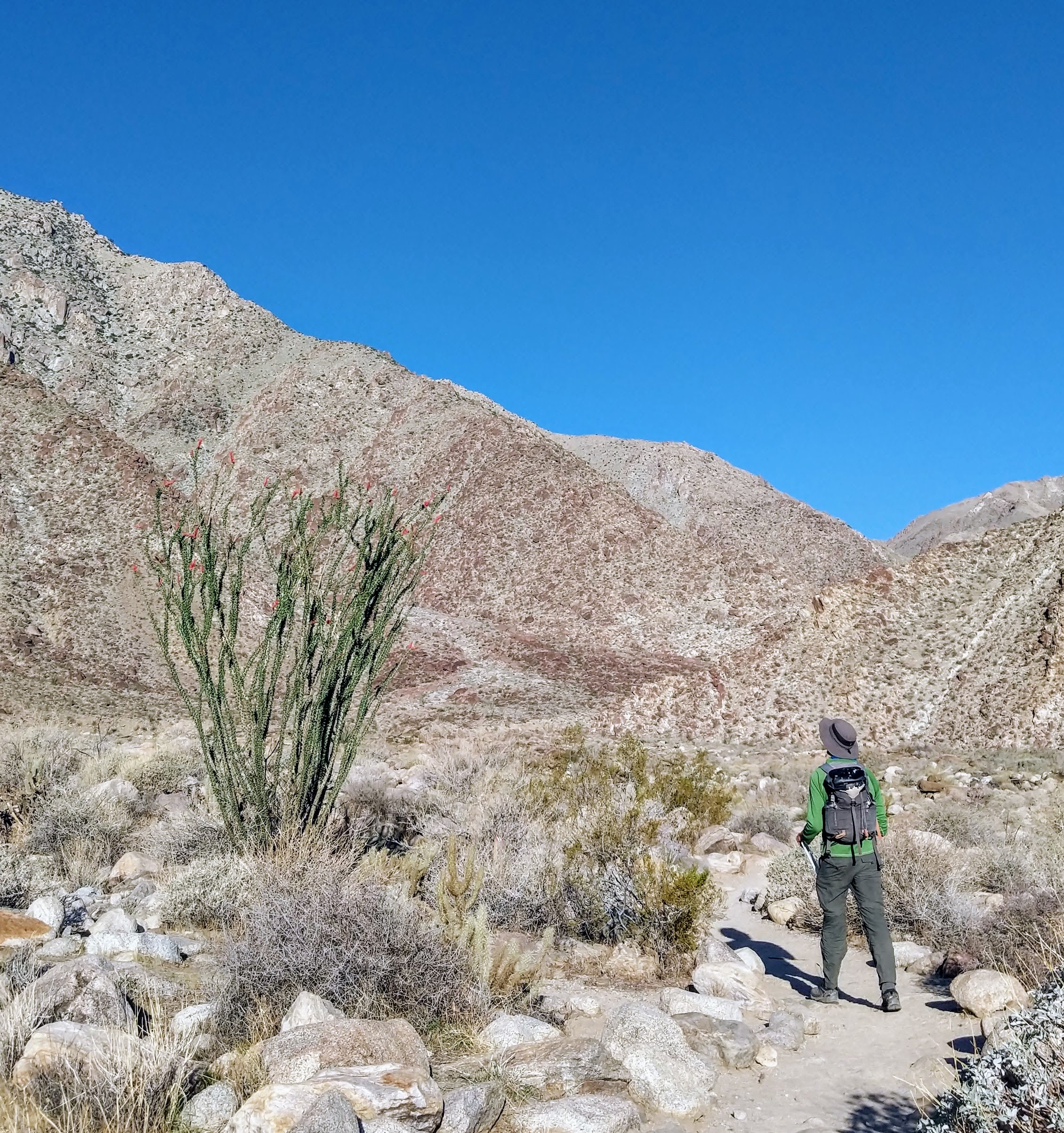


While not technically a cacti, this spindly-long-armed-bizarre-looking tree dots the landscape when driving through the Pinto Basin or Anza-Borrego State Park area. This Dr. Suess-y plant is the Ocotillo (Fouquieria splendens)! They could definitely pass as a cactus! We’ve seen over the past three weeks leaves start to appear on the branches, and the insanely bright long flowers pop out at the top. In the Anza-Borrego Desert State Park they are in fully leaf and flower right now! STUNNING! What might be crazier than bright red flowers against the beigey-sandy desert is that this plant can grow leaves up to EIGHT times a year. Depending on water availability the many little bright green leaves will sprout out of the spike covered branches and then fall when arid conditions return.
Pancake Prickly-Pear:
Pancake or Flapjack Prickly-Pear, scientifically known as Opuntia chlorotica is a pretty characteristic cactus. But around us it’s not too common. I’m getting a hold of the different types of spines, and this is a cacti that has two types. Glochids are small, barbed bristles that can bear spines. They are pretty much always around and golden colored. But there are also “central spines,” and spines on the edges of the fleshy parts known as “radial spines.” All those spines help deter wildlife such as deer from taking a much of their lush moisture filled pads.
Gander’s Cholla:
Gander’s Cholla has a very narrow range in the southern-central part of California, and expands into Mexico in a very narrow band. It blooms from March to May. Gander’s Cholla, Cylindropuntia ganderi has two subspecies, catavinensis, and the one pictured above ganderi. Desert ecosystems, especially California have many endemic species, found nowhere else on earth. While this one spans into another arbitrary geographic border any endemic is pretty special.
- Resources:
- Joshua Tree Cholla Cactus Garden
- Joshua Tree National Park
- Mojave Desert Cactus
- What is Cactus Corking?
- Cacti Pests & Diseases
- Opuntia chlorotica
- Cylindropuntia ganderi
- Cholla Wood
- How cacti become ‘rock busters’
- De Vivo, Luca, et al. “Cholla cactus frames as lightweight and torsionally tough biological materials.” Acta biomaterialia 112 (2020): 213-224.
- Pioneer species
- Why are some Cacti Purple?
- Succulent Definition, Wikipedia
- Why and How do Succulents Change Color?
I leave you with a funny gif I made with my sister. Ouchie!
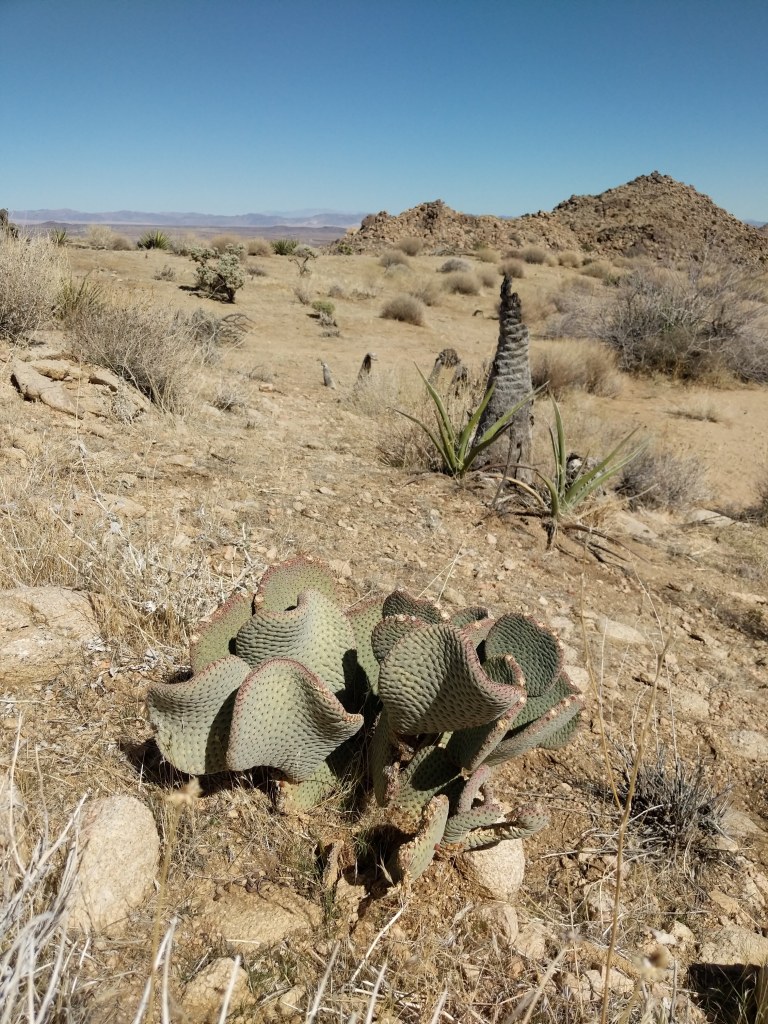

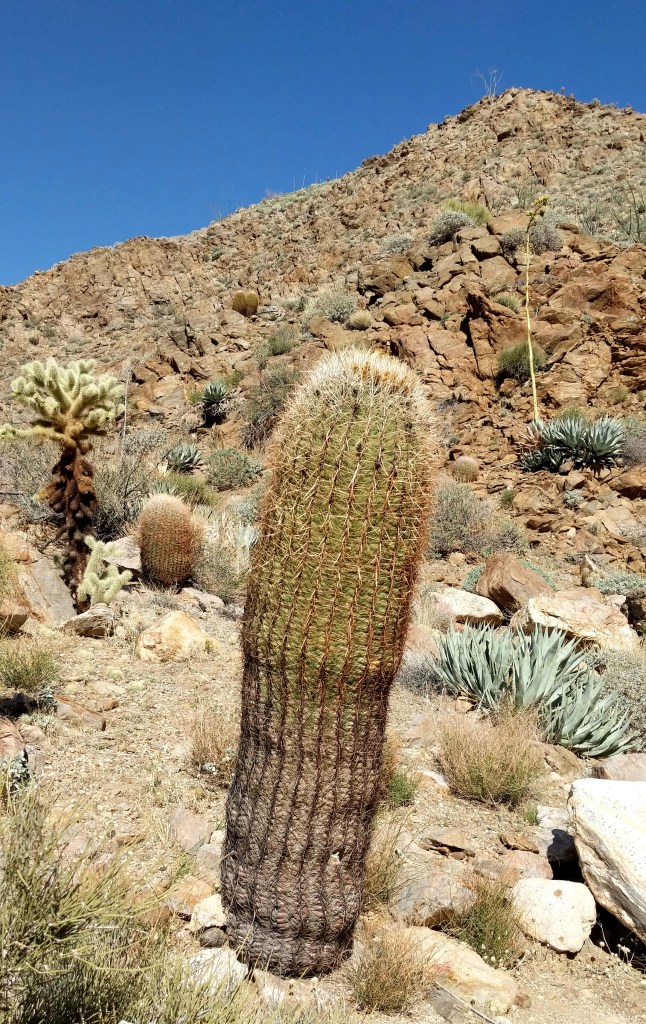

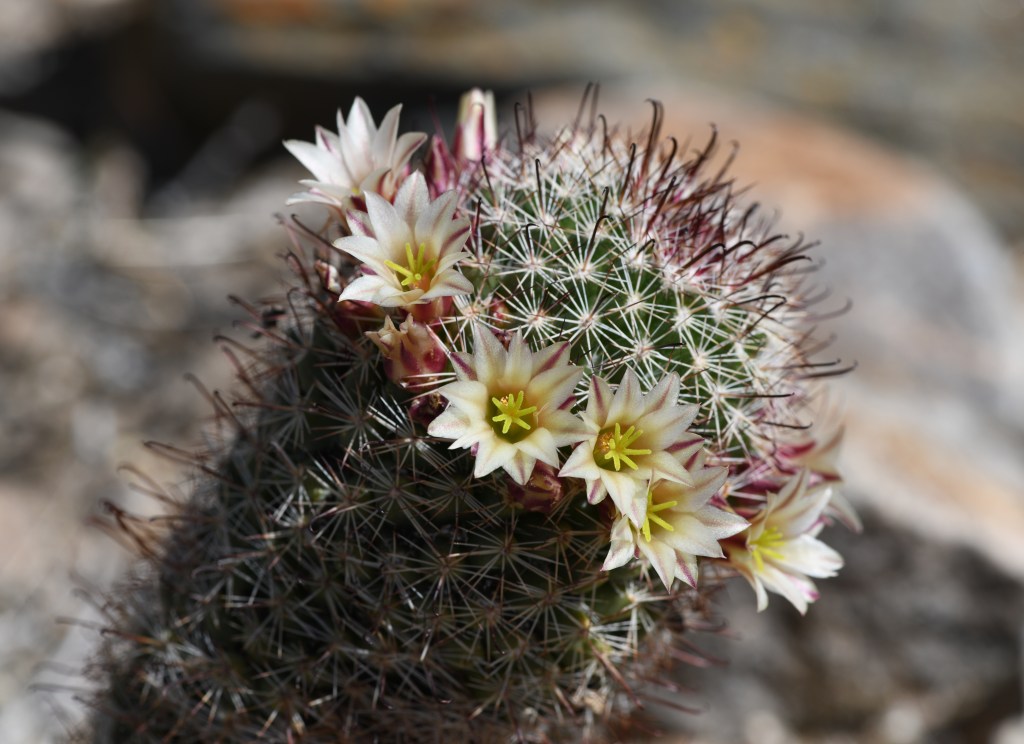


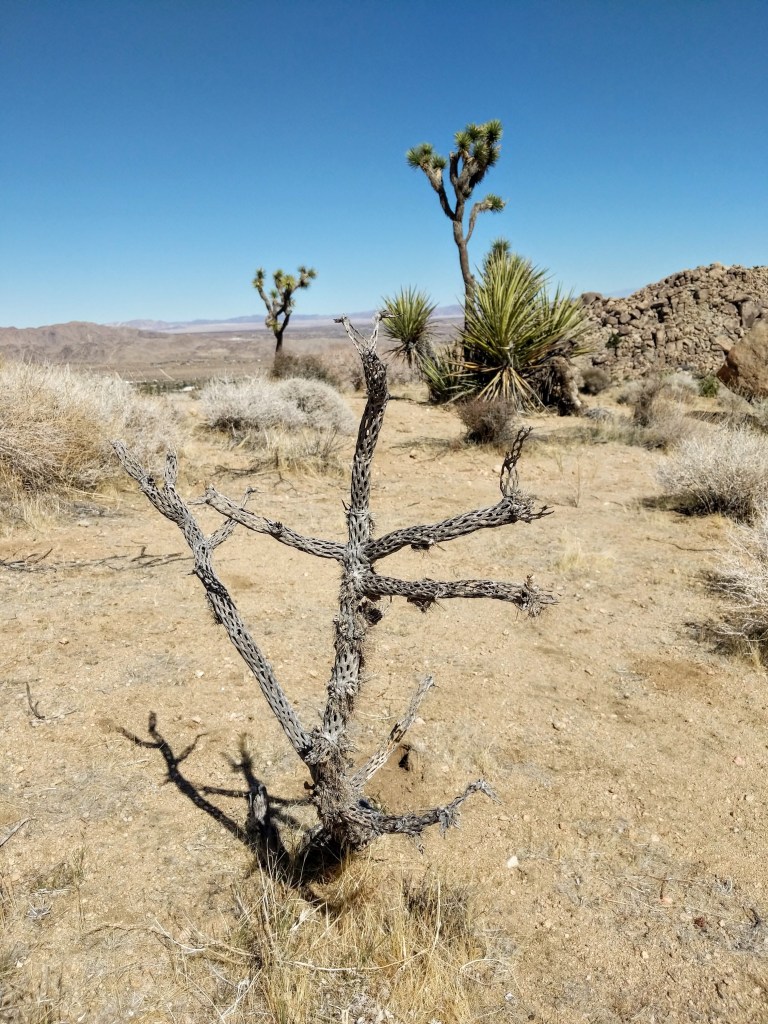
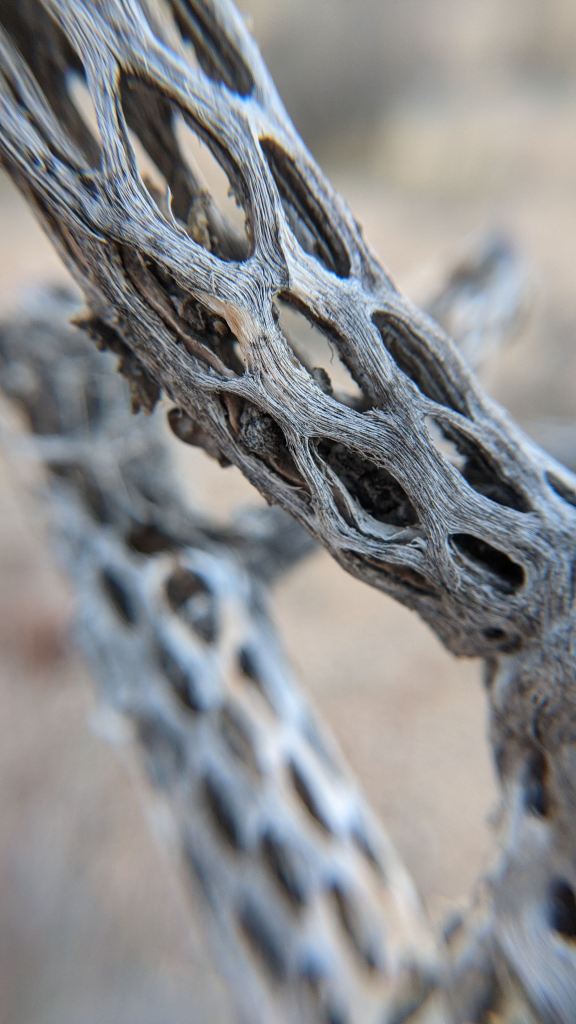
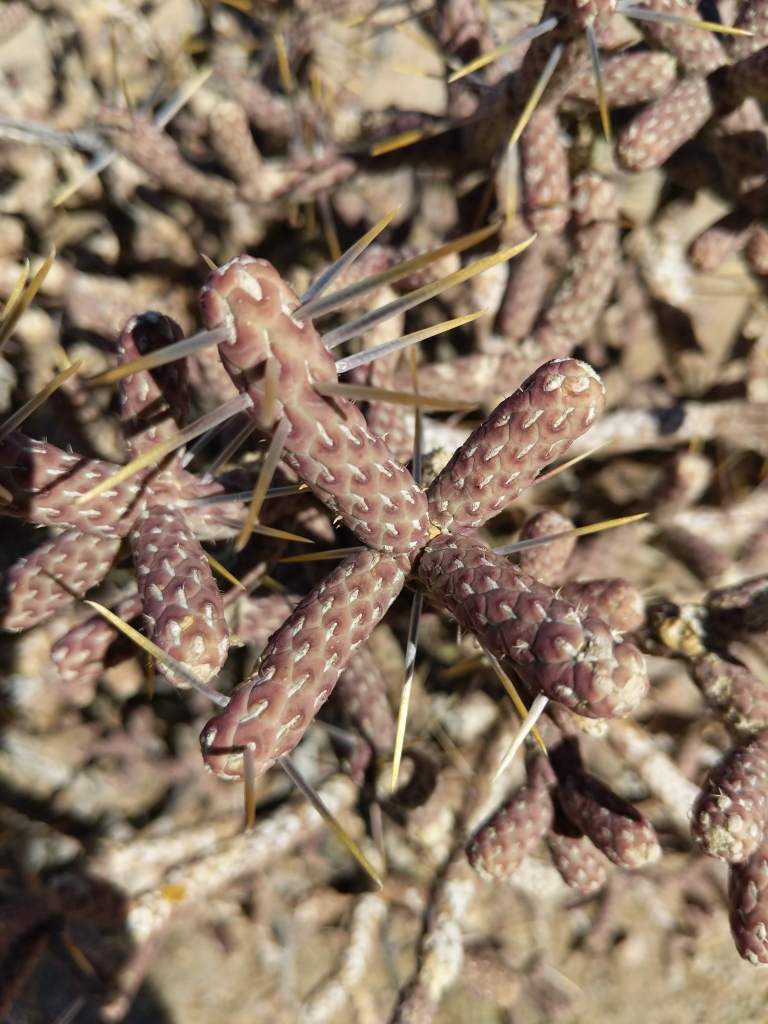

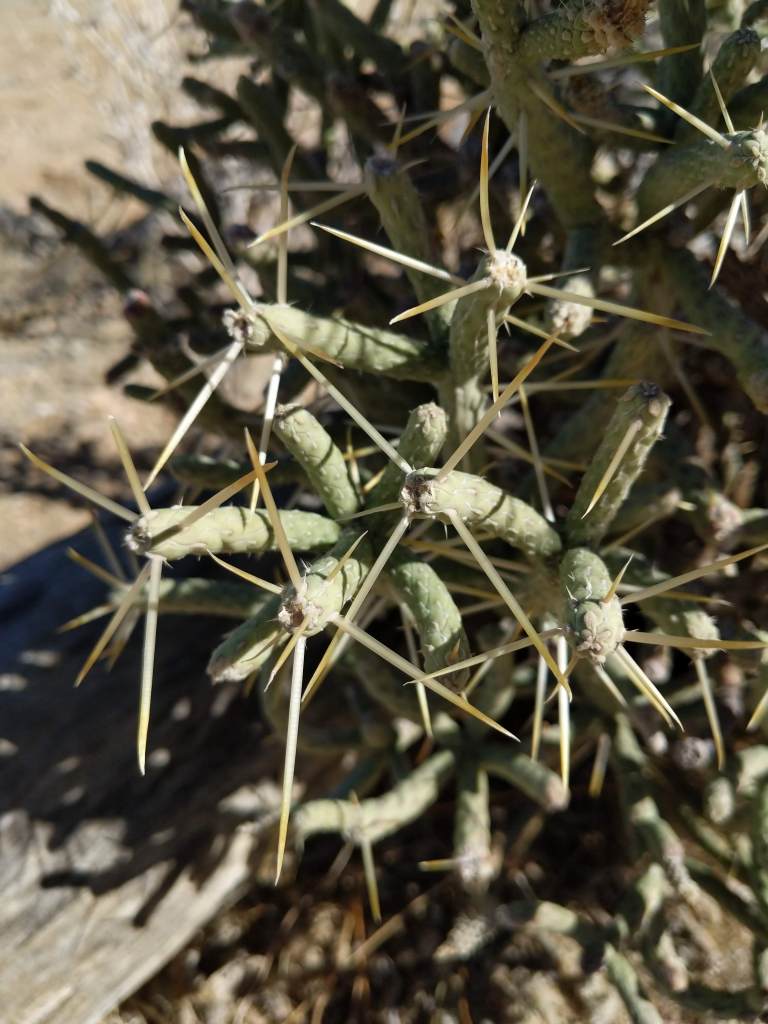
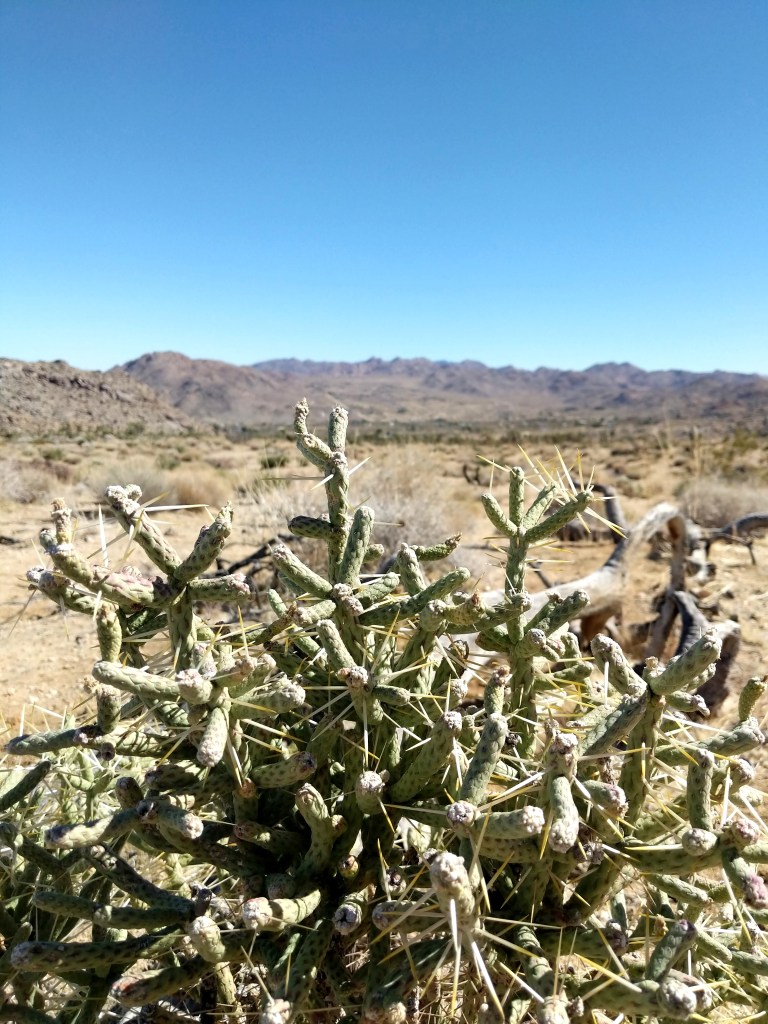

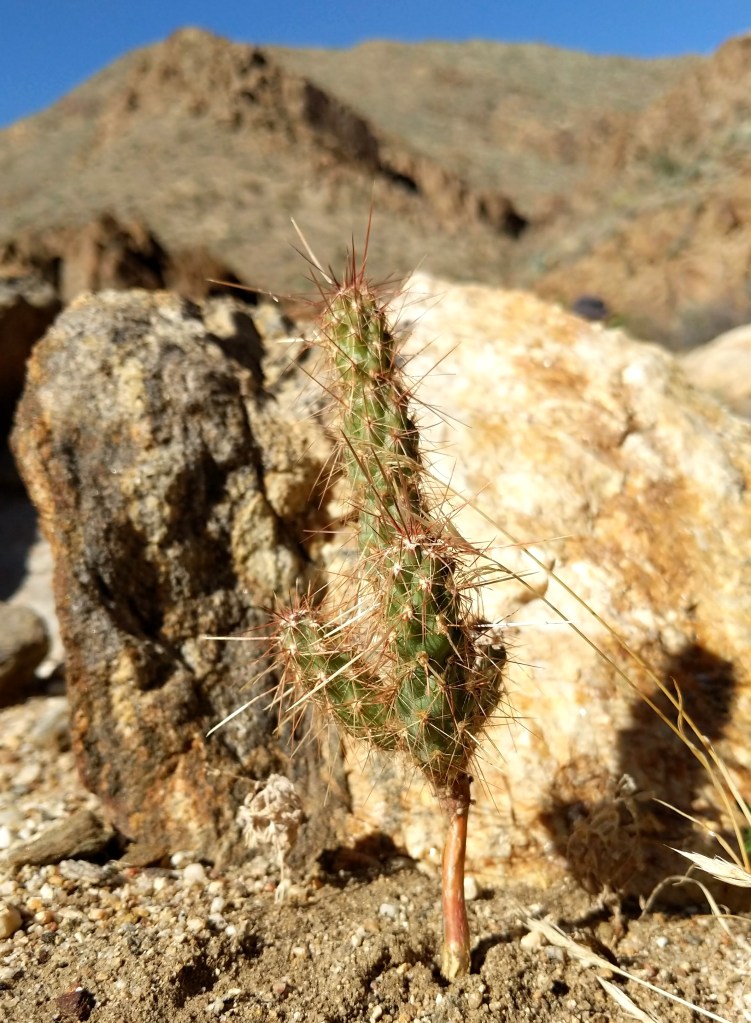
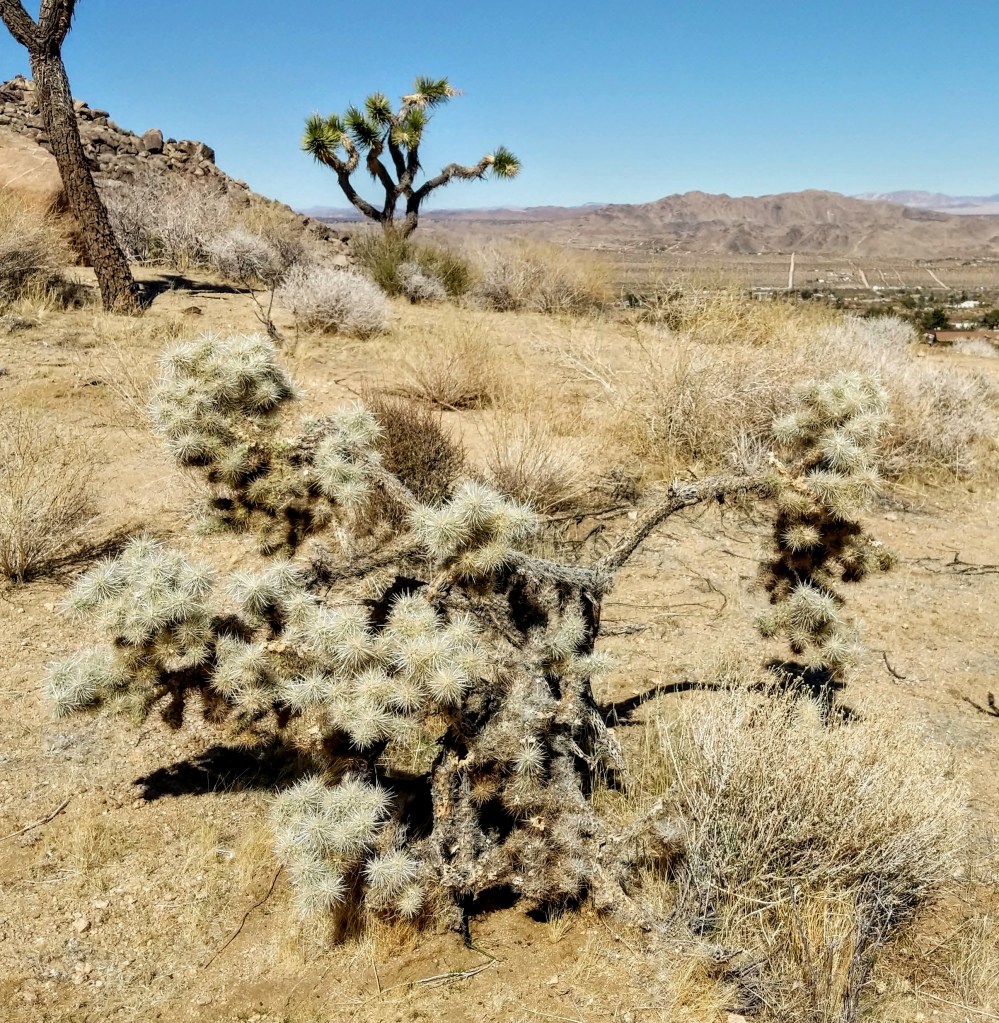


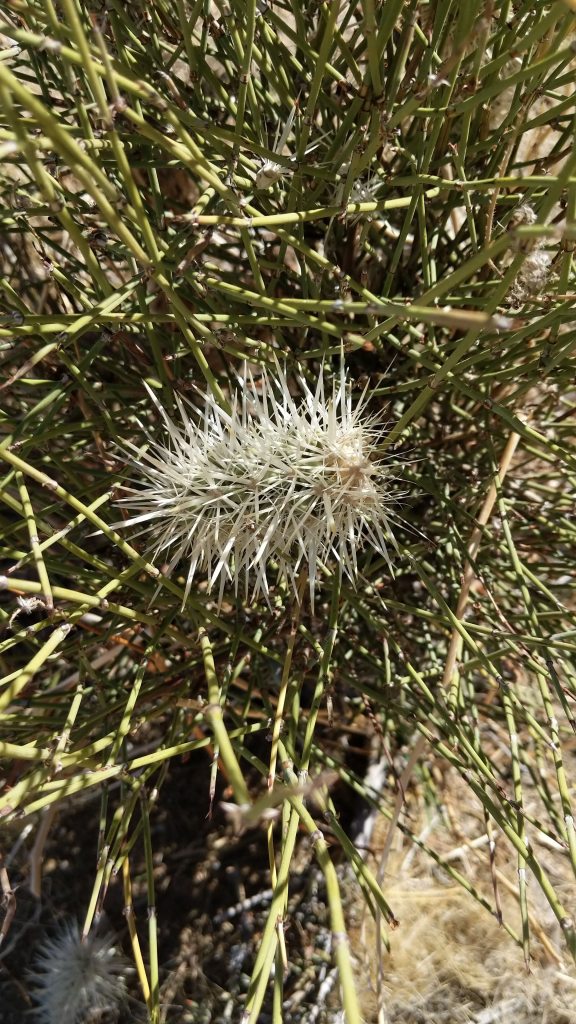

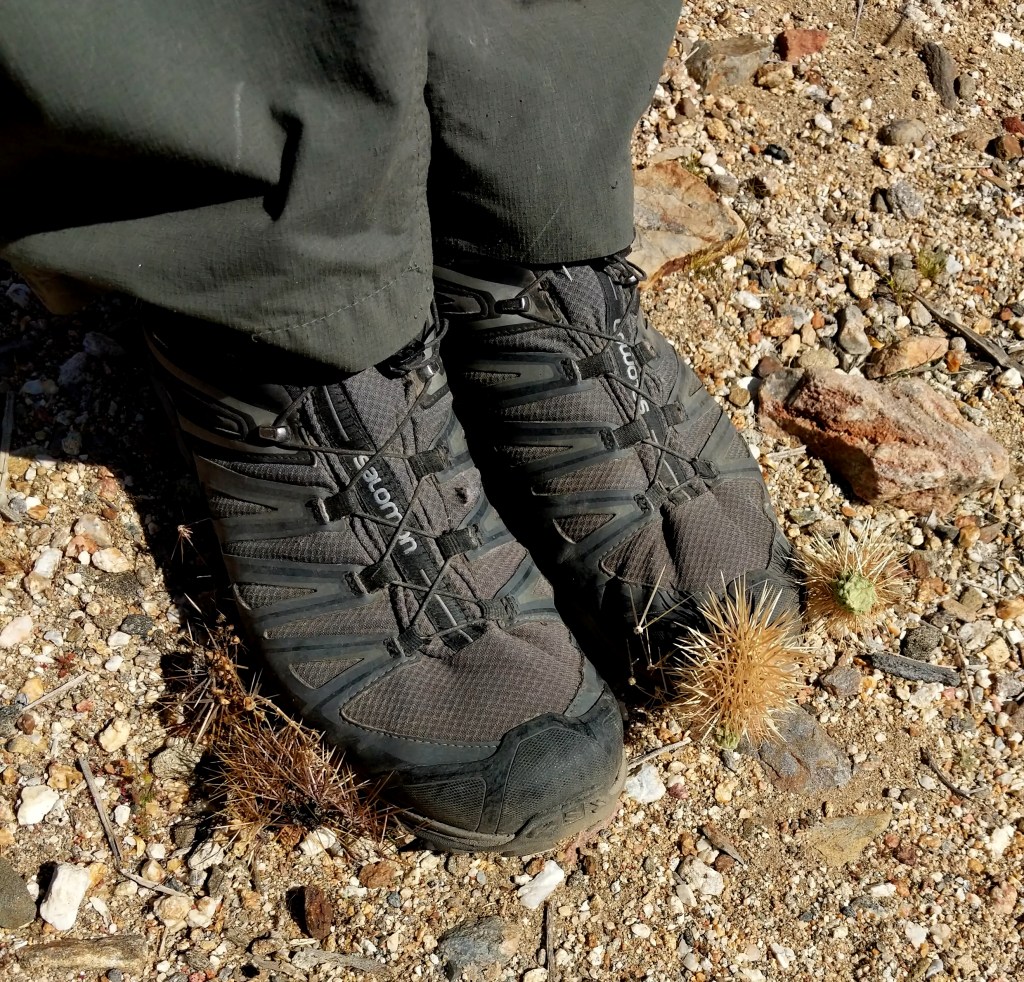







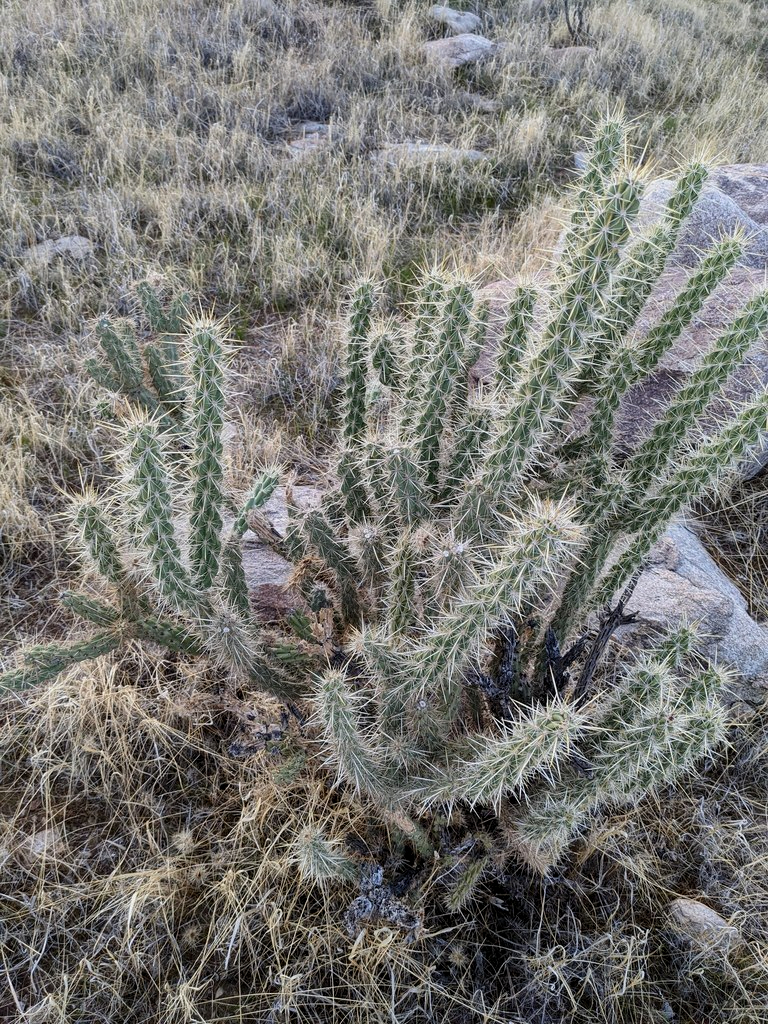


3 Comments Add yours